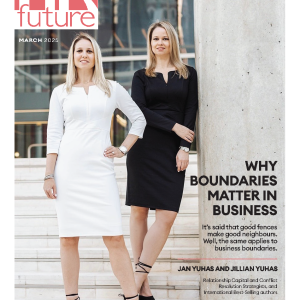Enhance employee engagement to ensure positive and consistent performance.
It is not without reason that the topic of engagement in the workplace garners the interest of many researchers and practitioners in the field of management and organizational behavior. It has been proven that employee engagement has become a fundamental and crucial element in the success of business organizations.
The history of employee engagement dates back to the 1950s, with some early experiments in Europe and the United States. It initially evolved from the philosophy of “industrial democracy” and “participatory management” to become a comprehensive approach to designing a work system that supports employees’ decision-making authority.
There has been discussion about organizations whose systems effectively empower employees, providing them with the skills and resources to make informed decisions.
Over time, in the early 1990s, several comprehensive studies revealed significant growth in collaborative and flexible work practices with high performance or high integration. In 1994, the results of a survey conducted in the United States indicated that one-third to half of the organizations had started using some employee engagement practices.
Concept of employee engagement
In order to assess whether an organization is implementing practices of employee engagement and has clear indicators of employee engagement, it is necessary to agree on a definition to facilitate measurement and obtain reliable results. Many books and researchers have addressed the concept of employee engagement.
Gallup, a specialized human resources consulting company, defines it as “a positive and satisfying mental state associated with work, where employees feel vitality, pride, inspiration and mental immersion in their work, leading them to take steps aligned with organizational goals and well-being.”.
Schaufeli defines it as “a positive and satisfying mental state associated with work, characterized by vitality, dedication and absorption. It is a more stable and widespread affective-cognitive state, rather than a temporary and specific state.”
Both definitions agree that employees experience a positive and satisfying state during their work, which motivates them to perform their duties with vitality and consistent engagement throughout their tenure in the organization.
This leads us to an important question: “Is employee engagement a state or a continuous behavior?” To answer this question, it depends on the organization. If an organization treats employee engagement as a temporary state, integrating employees in an unplanned and coincidental manner, the state quickly dissipates.
However, if the organization focuses on the concept and makes it a procedural approach, it will harness the highest level of productivity from its employees. The organization must study its reality and the reality of its employees, exploring ways to integrate them in order to achieve a reciprocal relationship that states, “
The more employee engagement practices increase, the more effective the organization becomes in achieving its goals and maintaining relationships with internal and external stakeholders.” This is not a trend of new concepts and terminology, but rather an applied reality proven through experience and accumulated studies.
Employee engagement and related concepts
There are several concepts that appear to be similar to the concept of employee engagement. The concept of employee engagement is associated with various related concepts that have a direct relationship with it. There are three concepts that closely resemble employee engagement, and it is necessary to explain and clarify the differences between them and this important concept. These concepts are: job commitment, job satisfaction and work addiction. Here is an explanation of each concept:
Job Commitment and Employee engagement: Job commitment is manifested when employees dedicate their time and energy to fulfilling their responsibilities at work. Commitment has two components: emotional and rational. When people feel positive emotions and express them towards an entity or an individual they have committed to, they demonstrate emotional commitment.
When most people consciously decide to fulfill commitments, carefully plan and implement the necessary actions, they demonstrate rational commitment based on their will. Since commitments require time investment in addition to mental and emotional energy, most people make them with the expectation of receiving something of value in return, such as privileges, gifts, money, or possessions.
In the workplace, employees and employers have implicitly entered into an agreement in exchange for commitment. Organizations provide valuable forms to employees, such as secure jobs and fair compensation. Reciprocity affects the strength of commitment, and when the entity or individual to whom someone has committed fails to deliver the expected exchange, commitment erodes.
Job Satisfaction and Employee engagement: Employee engagement is an emotional commitment to work that arises as a reaction to intangible factors in the workplace. On the other hand, job satisfaction relies more on the rational evaluation of tangible issues in the work environment. There are four scenarios for the relationship between job satisfaction and employee engagement:
- High job satisfaction and low employee engagement: This scenario is referred to as “golden handcuffs.” High satisfaction does not necessarily lead to a strong interaction or an employee’s love for their work. In this scenario, individuals achieve their goals in terms of money and status, but they still feel that there are other intangible factors missing;
- Low job satisfaction and low employee engagement: This is the worst scenario for both the company and the employee. The employee dislikes coming to work, and negativity prevails. Customers and colleagues will have a negative experience when dealing with such an employee;
- Low job satisfaction and high employee engagement: In this scenario, the person loves their work but feels that the organization benefits from them without sufficient appreciation. They feel that they contribute a lot without adequate recognition. Such individuals may look for a new position, and when they submit their resignation, there may be a counteroffer from the same organization in an attempt to retain their skills and positive energy; and
- High job satisfaction and high employee engagement: This is the best scenario for both the organization and the employee. The person loves the work they do and feels adequately compensated. They feel appreciated by the company.
Work Addiction and Employee engagement: Positive psychology researchers view employee engagement and work addiction as two different ways of experiencing work. Whether one is highly integrated or addicted to work, they both work hard, but the experience differs. Highly integrated individuals are in a positive state of giving, enjoyment, and enthusiasm, while work addicts tend to experience more negative energy in the form of stress, anxiety, and pressure. Employee engagement is seen as a positive form of hard work, whereas work addiction can lead to exhaustion.
Conclusion
The concept of employee engagement is not something extra without value, as some might call it, but rather a modern concept that quickly found its place in the field of human resource management.
The concept of employee engagement emerged as a recent trend in HR management in 2021, after being subject to experimental studies in psychology, which confirmed its positive impact on employees and companies.
It is necessary for organizations to standardize their own measurement scale to study employee engagement throughout the year, identify weaknesses and design an actionable plan to improve it within the company.
Employee engagement is not the final step in the HR workflow, but rather the starting point aligned with the organization’s strategy and HR strategy to ensure positive and consistent performance throughout the remaining stages.
Shaban Sabbah has more than 14 years of experience in human resources, strategic and operational planning, and quality management. Based in the Gaza Strip, he is a researcher interested in critical human resource management topics and has rich experience in raising and discussing human resource management topics with professionals and those interested in the field.






















